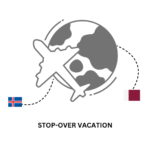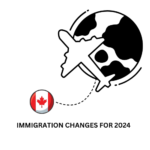Do You Need a Work Permit to Work in Canada? A Comprehensive Guide
If you plan to work in Canada as a foreign national, you’ll likely need a work permit. It’s important to understand the type of work permit you need, as this will determine your work conditions, including who you can work for, how long you can work, and even where you can work. There are two main types of work permits: employer-specific and open work permits. Here’s a detailed breakdown of each, along with their eligibility criteria.
- Employer-Specific Work Permit
An employer-specific work permit allows you to work in Canada under specific conditions as outlined in your permit. These conditions include:
Employer: You can only work for the employer specified in your work permit.
Duration: Your work permit will state how long you are allowed to work.
Location: If applicable, the permit may restrict you to working in a specific location.
What You Need Before Applying
Before applying for an employer-specific work permit, your employer must complete certain steps and provide you with the necessary documents. These include:
Employment contract: A copy of your signed employment contract outlining the terms and conditions of your job.
One of the following:
Labour Market Impact Assessment (LMIA): Your employer must obtain this document to demonstrate that hiring a foreign worker will not negatively affect the Canadian labor market.
Offer of employment number: For LMIA-exempt workers, your employer must submit the job offer details to the Canadian government using the Employer Portal. After submission, they will receive an offer of employment number, which they must provide to you.
Exceptions to the Employer Portal Requirement
In certain cases, your employer may not be required to use the Employer Portal. They must give you a copy of the employment contract in these situations instead.
- Open Work Permit
An open work permit provides more flexibility compared to an employer-specific permit. With this permit, you can work for almost any employer in Canada, except:
Employers listed as ineligible on the Canadian government’s list of employers who have failed to comply with employment regulations.
Employers who offer services such as striptease, erotic dancing, escort services, or erotic massages.
When Can You Get an Open Work Permit?
You can only apply for an open work permit under specific circumstances. Some common eligibility situations include:
- You are the spouse or common-law partner of a skilled worker or international student.
- You are an international student who has graduated from a Designated Learning Institution (DLI) and are eligible for a Post-Graduation Work Permit (PGWP).
- You have applied for permanent residence in Canada and are waiting for a decision.
- You are a refugee, a protected person, or someone who made a claim for refugee protection in Canada.
- You hold a temporary resident permit valid for six months or more.
- Medical Exam for Open Work Permits
- Depending on the type of job you’re applying for and your country of residence, you may need to undergo a medical exam. If you do not take the exam before your permit is issued, your open work permit may include restrictions, preventing you from working in specific sectors like healthcare.
General Eligibility Requirements for All Applicants
No matter where you apply from or which type of work permit you’re seeking, you must meet the following general eligibility requirements:
- Proof of intent to leave: You must prove to an immigration officer that you will leave Canada when your work permit expires.
- Financial support: You must show that you have enough funds to support yourself and any family members during your stay and to return home.
- Legal status: You must obey Canadian laws and have no criminal record. You may be asked to provide a police clearance certificate as proof.
- Security and health: You must not pose a threat to Canada’s security and must be in good health. A medical exam may be required, depending on the job and your country of origin.
- Employer restrictions: You must not plan to work for an employer who is ineligible under Canadian regulations or who regularly provides adult entertainment services.
- Additional documentation: You must provide any additional documents requested by the immigration officer to prove your eligibility.
Applying for a Work Permit from Outside Canada
You can apply for a work permit before you enter Canada, no matter where you are applying from. However, there may be additional visa office requirements specific to your country or territory of residence. Be sure to check the guidelines for your region to ensure your application meets all the necessary criteria.
Fast-Track Your Application with the Global Skills Strategy
If you are eligible, you can benefit from two-week processing under Canada’s Global Skills Strategy. This applies to specific high-demand jobs that contribute to Canada’s economic growth.
Applying for a Work Permit from Inside Canada
You can only apply for a work permit from inside Canada if you meet certain conditions, including:
- You have a valid study or work permit.
- You are the spouse, common-law partner, or dependent of someone with a valid study or work permit.
- You are eligible for a Post-Graduation Work Permit (PGWP) and your study permit is still valid.
- You have a temporary resident permit that is valid for six months or more.
- You have submitted an application for permanent residence from inside Canada and are waiting for a decision.
- You have made a refugee claim or have been recognized as a protected person by the Immigration and Refugee Board of Canada.
- You are authorized to work in Canada without a permit but need a work permit for a different job (this does not apply to business visitors).
- You are a trader, investor, intra-company transferee, or professional under the Canada-United States-Mexico Agreement (CUSMA).
Applying for a Work Permit at a Port of Entry (POE)
While it is generally recommended to apply for your work permit before you travel to Canada, certain applicants from visa-exempt countries may be eligible to apply at a port of entry (POE).
Who Can Apply at a Port of Entry?
You can apply at a POE if you:
Are from a visa-exempt country.
Are eligible for an Electronic Travel Authorization (eTA) or do not require a visitor visa to enter Canada.
Meet the requirements for the type of work permit you’re applying for.
Who Cannot Apply at a Port of Entry?
You cannot apply at a POE if you:
Need a visitor visa.
Are a citizen of a country that requires a visa to enter Canada.
Are applying for a Post-Graduation Work Permit (PGWP).
Are applying under the Seasonal Agricultural Worker Program.
Are part of the International Experience Canada (IEC) program and are not a citizen or permanent resident of the United States.
Biometrics and Medical Exams
1. Biometrics
You may be required to submit biometrics (fingerprints and a digital photo) as part of your application. If you need to provide biometrics, make sure to pay the associated fee when submitting your application and follow the instructions on your Biometric Instruction Letter (BIL).
2. Medical Exam
For certain types of jobs, such as those in healthcare, a medical exam may be necessary. To avoid any work restrictions on your permit, it’s advisable to complete the exam before submitting your application. You can arrange the exam through a designated panel physician.
How to Apply for a Work Permit Online from Inside Canada
If you’re applying online from within Canada, follow these steps:
Step 1: Prepare Your Documents – You’ll need:
A scanner or camera to create electronic copies of your documents.
A valid credit or debit card to pay your fees.
Step 2: Read the Instruction Guide
Even if you’re applying online, it’s important to read the instruction guide thoroughly before completing your application. The guide will provide detailed instructions for filling out each section of the form.
Step 3: Pay Your Fees
You’ll need to pay fees for processing your work permit and, if applicable, for your biometrics and any dependents included in your application. If you’re applying for an open work permit, make sure to also pay the open work permit holder fee.
Work permit fee: $155
Open work permit holder fee: $100
Biometrics fee: $85 per person (if applicable)
Step 4: Create an Online Account
You’ll need an online account to:
Submit your application.
Pay your fees.
Track the status of your application.
Once you’ve gathered all your documents, read the instructions, and paid your fees, you’re ready to submit your application online.
By following these steps and understanding the different types of work permits available, you’ll be well-prepared to work legally in Canada and take advantage of the opportunities it offers!



